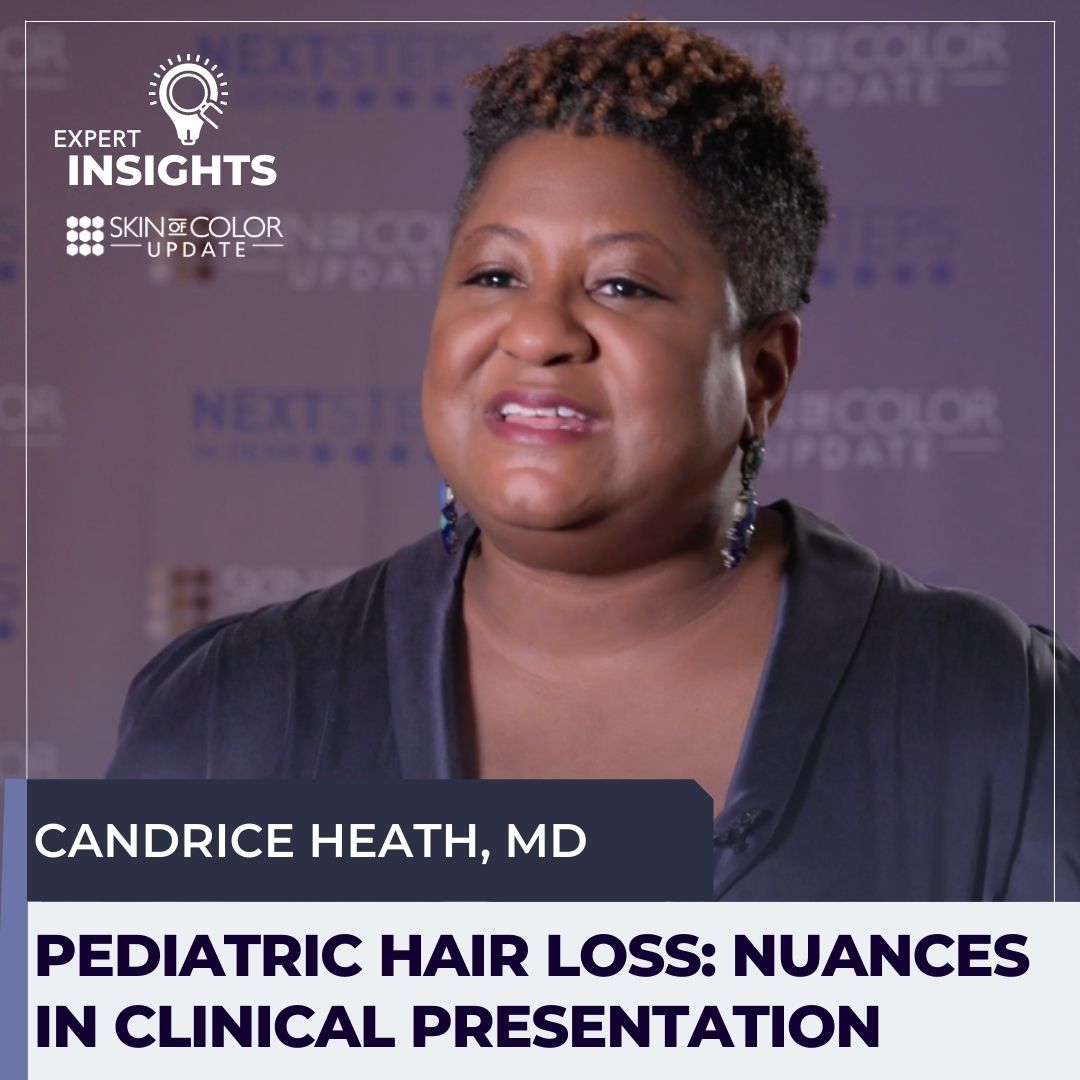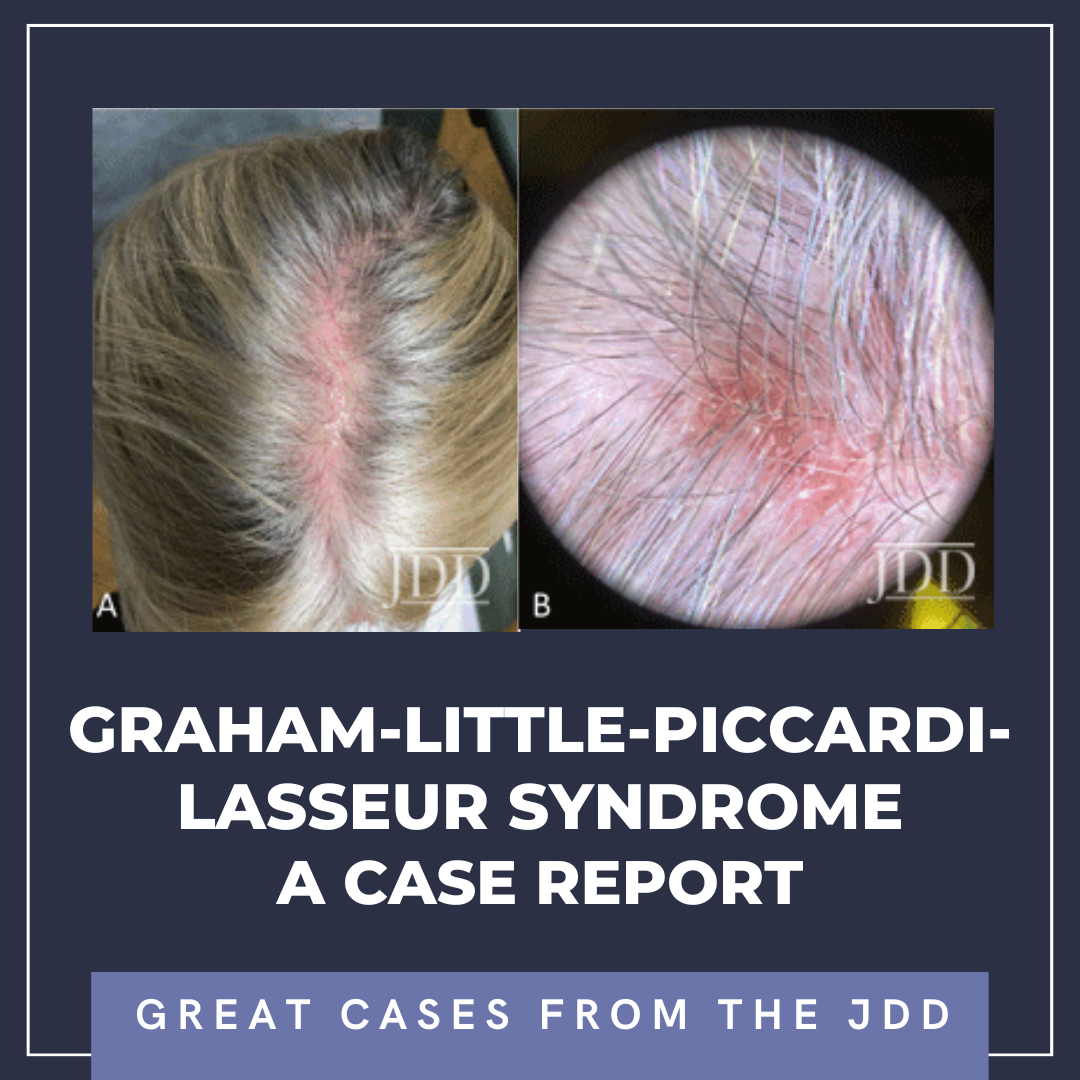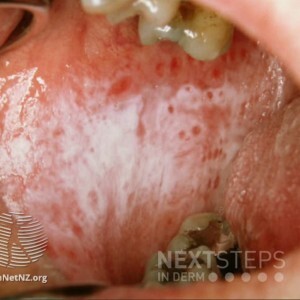Pediatric Hair Loss: Nuances in Clinical Presentation
 Next Steps in Derm, in partnership with Skin of Color Update, interviewed Dr. Candrice Heath, assistant professor of dermatology at the Lewis Katz School of Medicine at Temple University. Every dermatology clinician should know some very specific things about hair loss, according to Dr. Heath, including that children can present with adult hair conditions. Watch as Dr. Heath outlines three condit …
Next Steps in Derm, in partnership with Skin of Color Update, interviewed Dr. Candrice Heath, assistant professor of dermatology at the Lewis Katz School of Medicine at Temple University. Every dermatology clinician should know some very specific things about hair loss, according to Dr. Heath, including that children can present with adult hair conditions. Watch as Dr. Heath outlines three condit …
 Next Steps in Derm, in partnership with Skin of Color Update, interviewed Dr. Candrice Heath, assistant professor of dermatology at the Lewis Katz School of Medicine at Temple University. Every dermatology clinician should know some very specific things about hair loss, according to Dr. Heath, including that children can present with adult hair conditions. Watch as Dr. Heath outlines three condit …
Next Steps in Derm, in partnership with Skin of Color Update, interviewed Dr. Candrice Heath, assistant professor of dermatology at the Lewis Katz School of Medicine at Temple University. Every dermatology clinician should know some very specific things about hair loss, according to Dr. Heath, including that children can present with adult hair conditions. Watch as Dr. Heath outlines three condit … Continue reading "Pediatric Hair Loss: Nuances in Clinical Presentation"


 Next Steps in Derm, in partnership with Skin of Color Update, interviewed Dr. Shilpi Khetarpal, dermatologist at the Cleveland Clinic. Watch as Dr. Khetarpal outlines the four categories of adjunctive therapies for hair loss and why clinicians should pair them with traditional medical treatments. Learn Dr. Khetarpal’s typical treatment regimen when using PRP in hair loss patients. Find out what …
Next Steps in Derm, in partnership with Skin of Color Update, interviewed Dr. Shilpi Khetarpal, dermatologist at the Cleveland Clinic. Watch as Dr. Khetarpal outlines the four categories of adjunctive therapies for hair loss and why clinicians should pair them with traditional medical treatments. Learn Dr. Khetarpal’s typical treatment regimen when using PRP in hair loss patients. Find out what …  INTRODUCTION
Graham-Little-Piccardi-Lasseur Syndrome (GLPLS) is a rare clinical subtype of lichen planopilaris (LPP) that manifests as a triad of scarring alopecia of the scalp, nonscarring alopecia of the axillary and the pubic skin, and widespread lichenoid follicular papules.1 GLPLS more commonly affects women (male-to-female ratio ≃ 1:4), with the classic patient being a middle-aged Ca …
INTRODUCTION
Graham-Little-Piccardi-Lasseur Syndrome (GLPLS) is a rare clinical subtype of lichen planopilaris (LPP) that manifests as a triad of scarring alopecia of the scalp, nonscarring alopecia of the axillary and the pubic skin, and widespread lichenoid follicular papules.1 GLPLS more commonly affects women (male-to-female ratio ≃ 1:4), with the classic patient being a middle-aged Ca …  A 55 year-old woman comes in for a rash in her mouth pictured below. Also on exam, you note a scarring alopecia of the scalp. From the below options, which other location should you examine for hair loss?
A. Eyebrows
B. Legs
C. Axilla
D. Arms
E. Eyelashes
To find out the correct answer and read the explanation, click here.
Brought to you by our brand partner
…
A 55 year-old woman comes in for a rash in her mouth pictured below. Also on exam, you note a scarring alopecia of the scalp. From the below options, which other location should you examine for hair loss?
A. Eyebrows
B. Legs
C. Axilla
D. Arms
E. Eyelashes
To find out the correct answer and read the explanation, click here.
Brought to you by our brand partner
…  On this Mnemonic Monday, we challenge you to remember the geographical areas and associated species known for NEW WORLD leishmaniasis transmission with the following mnemonic:
Let's Go Get Brazilian Blowouts in Mexico
Let's = “lutz” aka Lutzomya sandfly species responsible for transmitting new world leishmaniasis
Brazilian = L. braziliensis complex, leishmaniasis species commonly …
On this Mnemonic Monday, we challenge you to remember the geographical areas and associated species known for NEW WORLD leishmaniasis transmission with the following mnemonic:
Let's Go Get Brazilian Blowouts in Mexico
Let's = “lutz” aka Lutzomya sandfly species responsible for transmitting new world leishmaniasis
Brazilian = L. braziliensis complex, leishmaniasis species commonly …